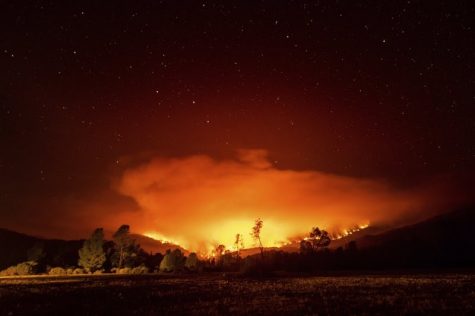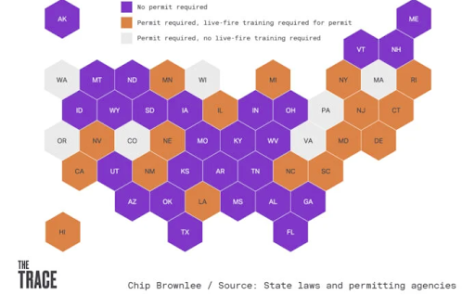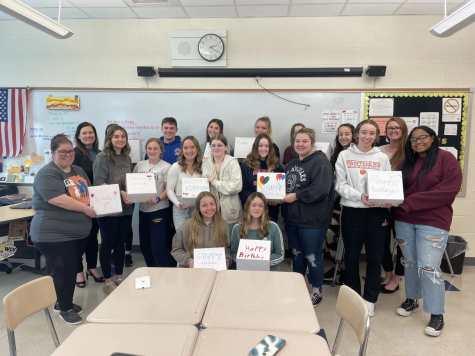California in flames: State’s largest wildfire represents a greater danger
October 22, 2020

Photo by Noah Berger.
The largest recorded wildfire in California history has now burned over 4 million acres of land.
California Gov. Gavin Newsom said that the fire has destroyed more land than all recorded fires in the state from 1932 to 1999. The staggering wildfire is known as the August Complex and has been burning brightly since Aug. 16.
The August Complex has destroyed hundreds of structures, with containment being estimated at 54%, meaning there is still plenty more expected from the wildfires.
The fire originated due to a perfect storm of environmental factors that have been compounding since 2019. It started with the driest autumn on record across much of Northern California, which was followed by a very dry winter. The spring saw unusually high temperatures, which then led to a severe drought that affected the West Coast and was accompanied by record high temperatures in many states during the summer.
Normally, plants have large amounts of water and moisture which makes them resistant to burning. Due to the drought, however, much of that water evaporated and left an abundance of dry plants and forests that were primed to burn. The plants were effectively kindling at that point.
Then a massive thunderstorm, that included over 11,000 lightning strikes, raged across California, spawning nearly 400 fires in the state. Federal officials dubbed them the “fires of hell.” They have resulted in not only deforestation, but dangerously potent amounts of smoke in the already very dry air.
The reason for the massive fire? Scientists say climate change is part of the answer.
Climate change in the form of greenhouse gas emissions represents a simple snowball effect that doesn’t directly start these natural disasters, but plays a huge factor in the size, frequency and duration of these events.
Utah Climate Center researcher Jon Meyer said, “These kinds of years certainly would have happened in the past. But with climate change, we’re loading the dice, creating a more favorable scenario for those types of years to occur more frequently.”
It is worth noting that wildfires are not inherently bad at all. They actually are a staple of forest ecosystems and help to remove decay from the ground and return nutrients into the soil. The issue lies with human interaction, as the unnatural suppression of these wildfires leads to over-vegetation. This means that when these fires do happen, they burn much stronger and longer, causing much more destruction.
Like many other things in 2020, the response to these wildfires has been exacerbated by the COVID-19 virus. Firefighters are forced to restrict themselves in defending the fires because of COVID precautions. The California Fire Department has just under 200 inmate fire crews, but with the virus spreading across prisons, inmates have been forced to be released, limiting the number of fire crews and leaving the state looking for answers.
What’s next? Experts warn that this is only the beginning of the damage.
Texas A&M climate scientist Andrew Dressler said, “If you don’t like all of the climate disasters happening in 2020, I have some bad news for you about the rest of your life.”






![“She [Walker] was the biggest advocate for any student,” said Basile.](https://mundismillmedia.com/wp-content/uploads/2023/05/Colorful-Watercolor-Note-Paper-with-Brush-Stroke-A4-Document-336x475.png)



